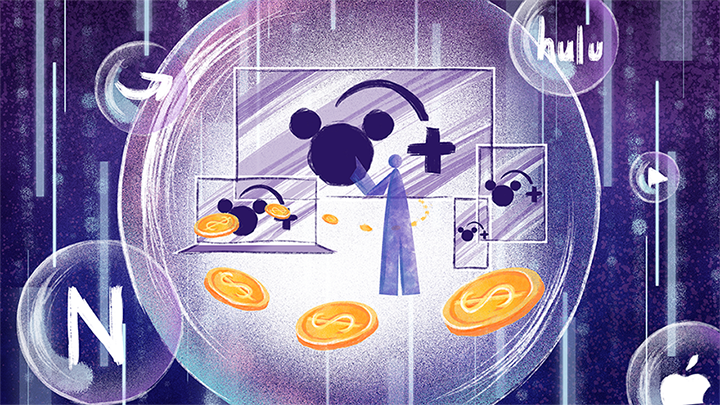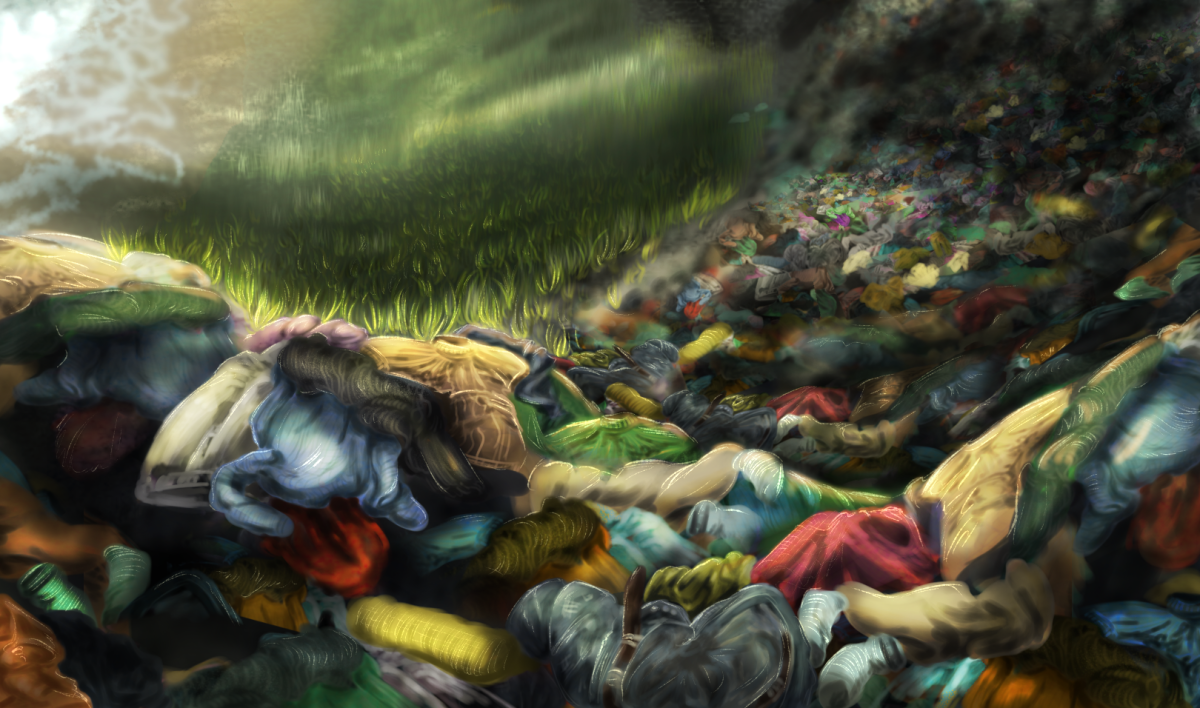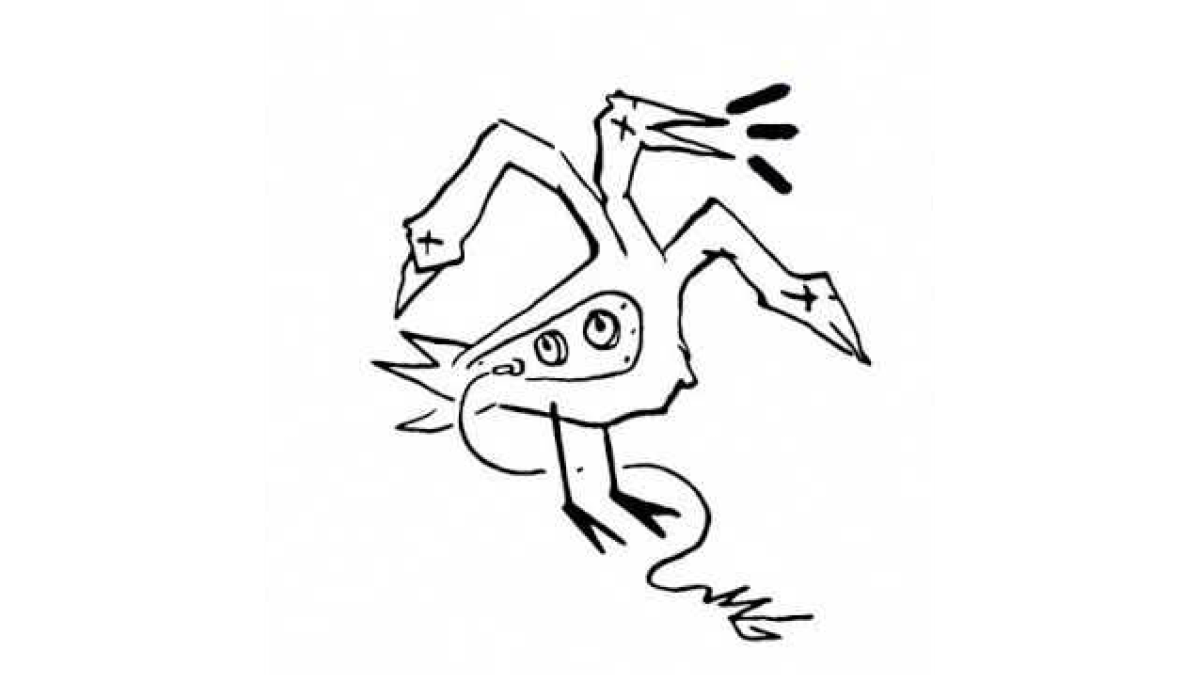The Walt Disney Company is large; there’s no way around that. If you’ve ever watched a Pixar movie, a Star Wars episode, a Marvel movie, an ABC show, a National Geographic show or a 20th Century Fox movie (among various other franchises), you’ve interacted with a piece of media currently owned by the Mouse House. And on Nov. 12, 2019, you’ll be able to stream all this content in one place — the company’s new service, Disney+.
With its launch imminent, many students find themselves worried that Walt and Mickey may soon control all the screens around them.
Monopolistic Woes
Catherine Osadciw, a fifth year Software Engineering major, explained these worries best.
She said, “[Disney’s] new streaming service is definitely going to be a reflection of the rising monopoly that they’re creating.”
Osadciw, a former Disney Parks employee and current secretary of RIT Theme Park Enthusiasts, as well as a lifelong Disney fan, still noted positive about this company.
She explained, “The content they produce is always incredible and high quality, and … that’s something that shouldn’t be overlooked.”
Disney — and its current CEO, Bob Iger — have dominated the entertainment industry for the last decade. A majority of the company’s success can be attributed to Iger’s aggressive approach to expansion. He and the company have brought numerous other large Hollywood studios under the Disney umbrella. The most recent example being the merger of Disney and Fox, which brought franchises such as “Avatar,” “The Simpsons” and “X-Men” into the Disney fold.
“The content they produce is always incredible and high quality, and … that’s something that shouldn’t be overlooked.”
What is so specifically troubling about Disney+ though? What has RIT students up in arms about the new service? Trent Hergenrader, associate professor for the College of Liberal Arts and professor of a Star Wars-based class, has an idea that has to do with a distant relic of the past.
The Return of an Old Adversary
“You cut the cord so you can get away from cable,” Hergenrader said. “And now it’s like [costs] are pretty much back up by the time you have to pay for all these different streaming services.”
Hergenrader remembers satellite — the last content distribution platform meant to topple cable. It, too, was integrated into the system and became part of cable’s current near-monopoly. He understands students’ frustrations with the numerous streaming services launching in the coming year.
“The goal of being able to distribute content across the internet is sort of the antithesis of what we’re currently getting,” Hergenrader said.
People were hoping for a free and open web where companies had to play by our rules, but the gears of power have once again shifted in the direction of the companies.
Osadciw agreed, “Every TV network and film studio is trying to create their own streaming service now and it’s frustrating to have to be expected to pay for four different services to get the content you want.”
“Every TV network and film studio is trying to create their own streaming service now … “
So, like everything, it all comes back to cable.
The Flourishing of a New Artistic Perspective
It should be noted that Disney is a whole different beast in comparison to other cable rivals of the past. The sheer size and scope of the content they produce is unmatched. Today’s film-going public wants to see massive spectacles and something similar can be said for television.
On the topic of two of Disney’s largest properties, Marvel and Star Wars, Osadciw made an observation.
She said, “Disney obviously has so many financial resources. They have the money to power these certain franchises.”
There is only a small handful of studios that would be able to do what Disney has done with just one of their mega-franchises, let alone finance all of the smaller films and sub-studios the company is also currently powering.
From the viewpoint of fans such as Osadciw and Hergenrader, this is at least one positive example of Disney’s current trajectory. And even with it’s big budget blockbusters, the company is often willing to take risks on the talent they put in front of and behind the camera.
“My kids are 10 and 7. Their heroes are Rey and Black Panther. These are characters of color and female characters. I didn’t have that as a kid,” Hergenrader said. “I think there’s real power to a certain point, that Disney is as big as they are. [They’re] able to make those movies and roll the dice.”
Clearly, the situation is not nearly as cut and dried as one would think. The Walt Disney Company, while disturbingly massive, seems to be pushing out generally successful and well-received content at a rate almost unimaginable in the not-too-distant past. And that content seems to work to serve underrepresented voices in media.
The Future Wears Mouse Ears
The main concern among people seems to be not about what Disney is currently doing, but what they could be doing.
“If [Disney] could make an awful movie and make $10 billion, or make an artistically great movie and make $4 billion, they’re gonna go with the $10 billion option; there is no question,” Hergenrader stated. “Best-case scenario is you get both though!”
One can only wonder where a company with such a large cultural footprint will leave us as a society in a few decades. Will Disney soon be able to use their films and movies to socially engineer the public into serving their evil, corporate desires? Most likely not, but it’s an interesting thought.
Yet none of this really matters too much in the end. Many of us will likely buy Disney+ and enjoy it. Where else are you going to find shows like “The Mandalorian” or “The Falcon and Winter Soldier?” Hergenrader summed up the futility of this whole ordeal with some rather sage wisdom.
“If you pay $10 and you’re mad about it, or you pay $10 and you think it’s the best thing in the world, it’s still $10 to Disney, right?” he said. “I mean, they don’t really care one way or the other.”
A majority of us will be peeking our head inside that decades-old Disney vault on in November. Let’s just hope nothing too bad crawls back out.






